Introduction:
The concept of dāntián 丹田 ("elixir field") is key to the understanding of qìgōng 氣功, as well as Taoist meditation and internal alchemy (內丹術 nèidān shù). Due to the esoteric nature of these practices in ancient times, and the current lack of clear information (and confusing and erroneous information), this term remains full of mystery even today.
Traditional Chinese Medicine (中醫 Zhōng yī), qìgōng and martial arts refer to this concept, although the meaning they give to it is not exactly the same.
To understand what the dāntián is, we must go back to its origins in Taoist alchemy, and also understand it.
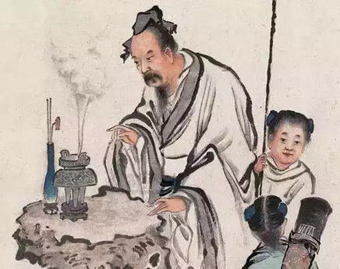
The first Taoist alchemy: "external" alchemy
One of the main concerns of philosophical Taoism (道家 dào jiā) has been the prolongation of life, through certain practices to achieve immortality or longevity.
In ancient times, Taoist hermits and sages devoted themselves to the search for a formula to produce an elixir that would grant immortality, through the combination and purification of certain metals, minerals and other natural substances. This practice is known today as external alchemy or wàidān 外丹 (literally, "external elixir"). The origin of this practice dates back approximately two thousand years.
To refine the alchemical substances, a cauldron (鼎 dǐng) was heaten on a stove or fire (爐 lú). Among the substances used were gold, silver, cinnabre, realgar, mercury, lead and arsenic, many of them highly toxic.

Bronze cauldron (鼎 dǐng) from the Hàn 漢 dynasty.
The result of the alchemical process was a pill-like elixir, which was ingested by the alchemist. As can be assumed, the toxicity of the substances led to the poisoning and death of many practitioners of external alchemy.
However, the experimentation of these early alchemists brought important discoveries, such as gunpowder and compass.
Over time, practitioners of this type of alchemy became aware of the risks involved. The search for this elixir of immortality produced the effect inverse of the desired one, so external alchemy was abandoned in favour of a new type of practice, which was called "internal alchemy".

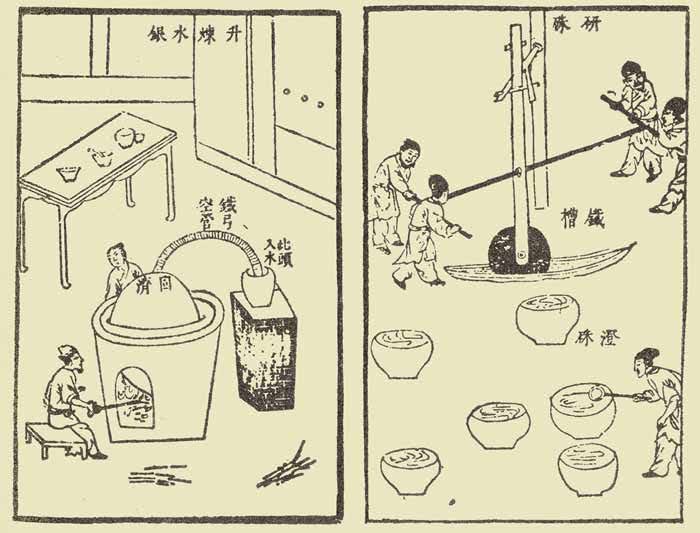
Illustrations showing the alchemical process.
Internal alchemy
The failure of external alchemy led alchemists to understand that the true alchemical process should take place within the body itself, which they conceived as an oven and to whose energetic components they associated alchemical terminology.
This new way of understanding alchemy was called internal alchemy or "internal elixir" (內丹 nèidān), and comprises a series of meditative practices and control of attention and breathing to produce energetic changes in the body.
The transformation process is analogous to that of external alchemy: the substances are refined, starting from the jīng 精 (essence) to produce qì 氣, which in turn becomes shén 神.
Certain areas of the body are conceived as a series of furnaces and cauldrons (爐鼎 lú dǐng) where energy is transformed. The different components that according to the Chinese conception constitute the organism are associated with alchemical substances, such as lead to qì, or mercury to the mind.
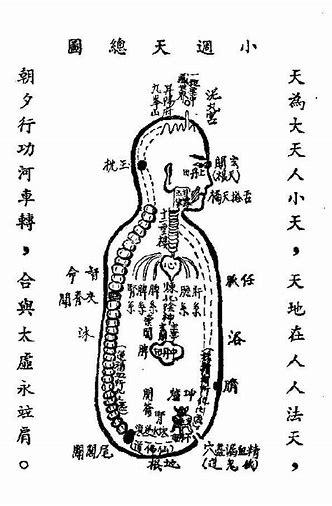
Diagram showing the circulation of internal energy through the Microcosmic Orbit (see below).
Notice the drawing of a cauldron at the bottom.
It is in this context that the concept of dāntián 丹田 or "elixir field" appears, understood as an area of the body where the energy that results from the alchemical process is stored.
One of the first existing written references to the term dāntián is the Lǎozǐ zhōng jīng 老子中經, a text of the 3rd century of our era describing methods of meditation and visualization.
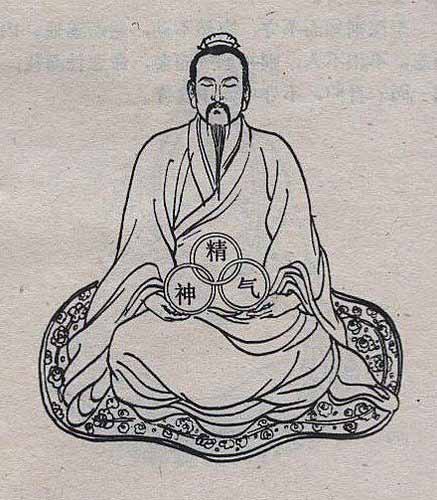
The dantian and the alchemical process
The practice of internal alchemy is to refine the jīng, specifically the yáng 陽 part, and transform it into qì by activating the "fire" of the perineum, which acts as a furnace. This fire, fuelled by diaphragmatic breathing, begins to transform the jīng into qì, which is stored in the dāntián.
However, at the beginning of the practice, the dāntián is not yet "formed". The dāntián can be formed spontaneously during the practice of qìgōng and martial arts, or it can be intentionally formed with certain exercises of nèi gōng 內功, in which the breath is "anchored to the kidneys".
Once the dāntián is properly formed and begins to store energy, this energy begins to circulate in the ventral cavity forming what is called the "Minor Microcosmic Orbit".
When the energy of the kidneys is strong enough, another "furnace" is activated at the mìngmén 命門 (DM4) accupuncture point, which causes the qì to ascend through the dū mài 督脉 (Governing Vessel) channel, activating the Microchromic Orbit (小周天 xiǎo zhōu tiān).
The activation of this orbit opens the energy channels by stimulating the circulation of qì throughout the organism, and is the basis of the yǎng shēng dào 養生道 ("Healthy Way of Life").
The dāntián is called the "elixir field" for a reason, because, like a crop, it requires constant care and maintenance work.
In qìgōng, it is said that three dāntián exist in the body: the lower dāntián, located in the lower belly; the middle dāntián, at chest height, and the upper dāntián, inside the head. This vision is widely accepted. However, all schools attach greater importance to the lower dāntián, which is the same one we refer to when we talk about "the dāntián", in singular.
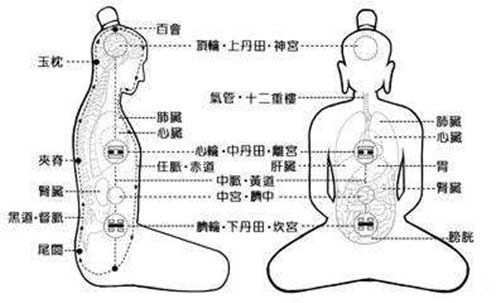
Circulation of the Microcosmic Orbit. In the drawing, the three dāntián are marked in circles.
The dantian in martial arts
Martial arts did not incorporate the concept of dāntián until later times, about 300 years ago. The so-called "internal styles" were the first to incorporate this concept into both their theory and practice.
One of the first classical texts of martial arts that refers to the dāntián is the jiǔ yào lùn 九要論 ("Nine Important Theories"), which sets out the theoretical basis of Xìng Yì Quán 形意拳, and of which Tài Jí Quán 太極拳 also has its own version.
However, for these arts the dāntián is more of a specific physical area than an abstract concept: in general, the area between the hip and the waist; and its importance lies in power generation. It is said that this area "governs" movement, in the sense that it transfers energy between the lower body and the upper part.
Conclusion
The concept of dāntián comes essentially from Taoist internal alchemy, and it is in this discipline that it acquires its full meaning, thus developing its true potential.
In another article we will talk in greater detail about the Microcosmic Orbit, which requires for its operation the formation and development of the dāntián, and in which the latter is fully involved.
